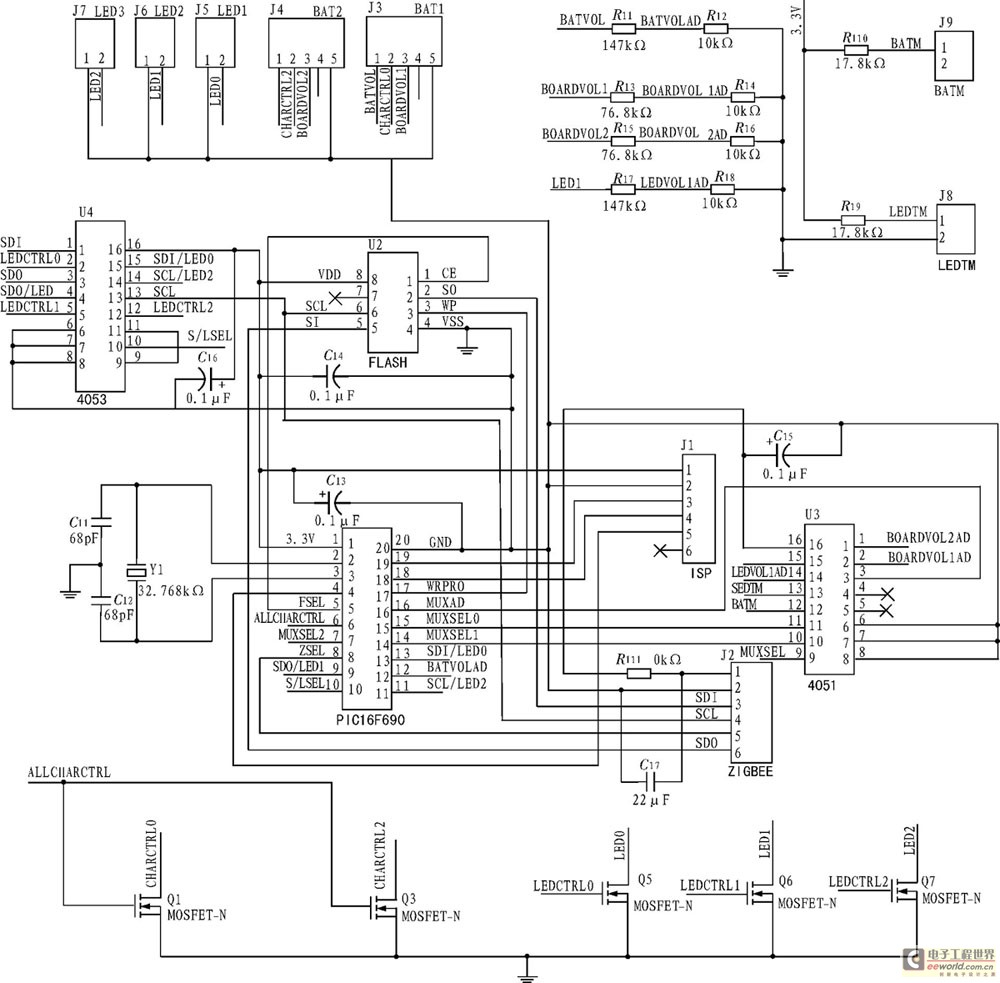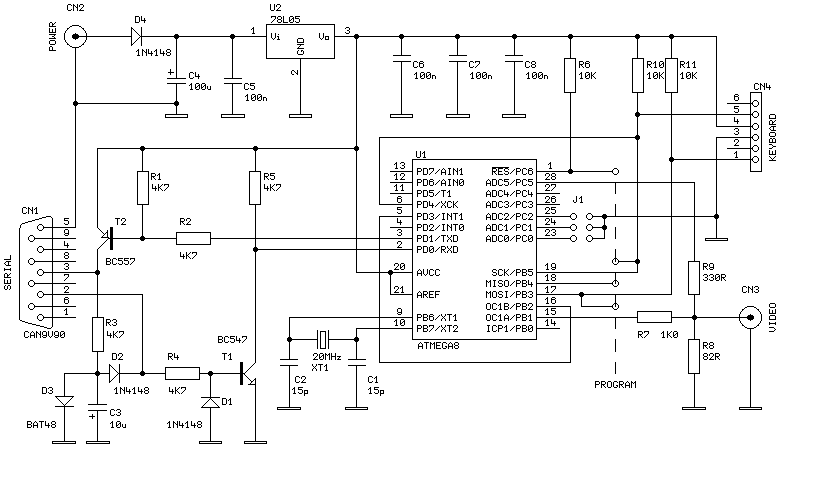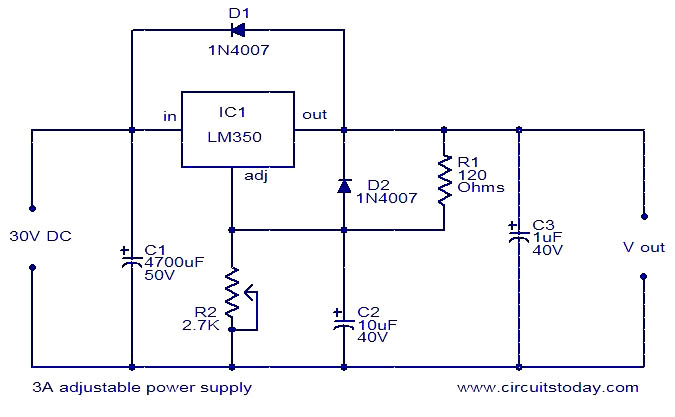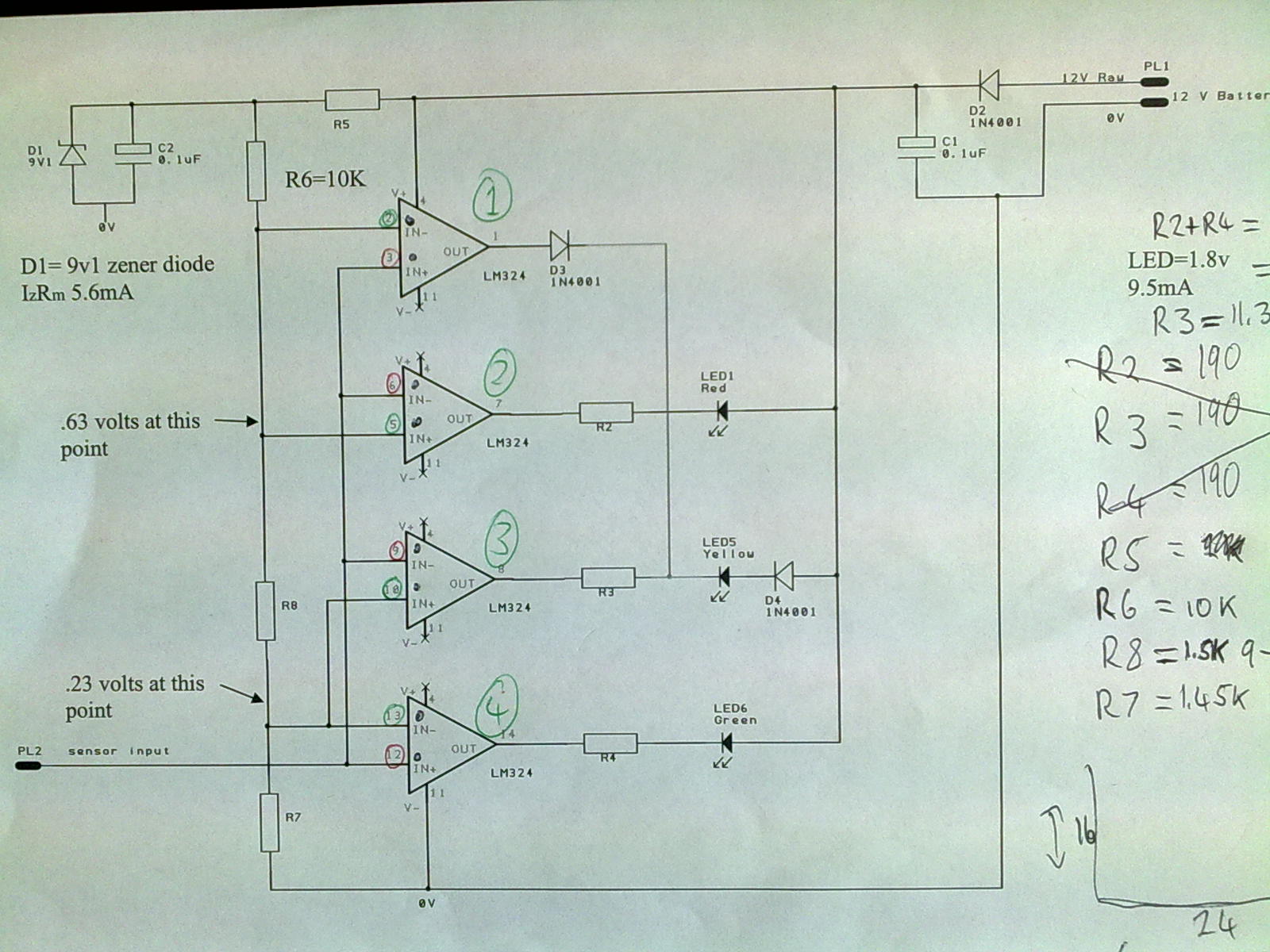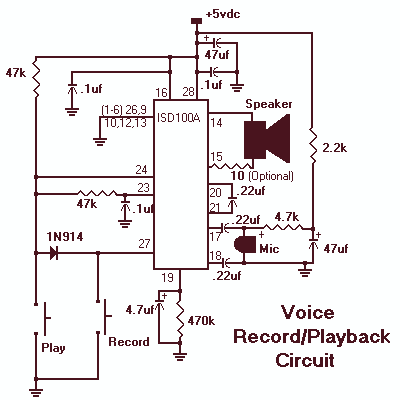
Simple Parking Sensor Using LM324

The circuit diagram represents a simple parking sensor system that measures the distance between the rear bumper of a vehicle and obstacles located behind it. The schematic consists of two main components: the transmitter and the receiver. The distance measurement is indicated by a series of LEDs (D5 to D7) that illuminate in response to varying distances. Specifically, at a distance of 25 cm, LED D7 will light up, while at 20 cm, LED D6 will activate.
The parking sensor circuit utilizes ultrasonic technology to detect obstacles and provide visual feedback to the driver through the LEDs. The transmitter emits ultrasonic waves, which travel until they encounter an object. The waves then reflect back to the receiver, where the time taken for the echo to return is measured. This time interval is directly proportional to the distance of the object from the sensor.
In this design, the transmitter typically consists of an ultrasonic transducer that generates sound waves at a frequency above the audible range. The receiver, which may also be an ultrasonic transducer, captures the returning sound waves. A microcontroller or a dedicated signal processing circuit interprets the received signals and determines the distance based on the speed of sound.
The LED indicators serve as a user-friendly interface, providing real-time feedback on the proximity of obstacles. For example, LED D5 could signal a safe distance, while D6 and D7 indicate progressively closer distances, alerting the driver to take caution as they approach an object. The use of multiple LEDs allows for a visual gradient of distance, enhancing situational awareness while reversing.
Power supply considerations for the circuit are also crucial, as the sensors and microcontroller require a stable voltage source. Typically, a 5V power supply is adequate for these components. Additionally, incorporating resistors in series with the LEDs ensures proper current flow, preventing damage to the LEDs and maintaining appropriate brightness levels.
Overall, this parking sensor circuit diagram illustrates a practical and effective solution for enhancing vehicle safety during reverse maneuvers, utilizing simple electronic components to achieve reliable distance sensing.Circuit diagram is a simple parking sensors, sensing the distance between where the rear bumper of the car and obstacles behind the car. In the circuit diagram there are two parts to the scheme and the scheme for the transmitter receiver.
Distance can be understood from a combination of LEDs (D5 to D7) glowing. At 25cm D7 akan beam, 20 cm in e6 . 🔗 External reference
The parking sensor circuit utilizes ultrasonic technology to detect obstacles and provide visual feedback to the driver through the LEDs. The transmitter emits ultrasonic waves, which travel until they encounter an object. The waves then reflect back to the receiver, where the time taken for the echo to return is measured. This time interval is directly proportional to the distance of the object from the sensor.
In this design, the transmitter typically consists of an ultrasonic transducer that generates sound waves at a frequency above the audible range. The receiver, which may also be an ultrasonic transducer, captures the returning sound waves. A microcontroller or a dedicated signal processing circuit interprets the received signals and determines the distance based on the speed of sound.
The LED indicators serve as a user-friendly interface, providing real-time feedback on the proximity of obstacles. For example, LED D5 could signal a safe distance, while D6 and D7 indicate progressively closer distances, alerting the driver to take caution as they approach an object. The use of multiple LEDs allows for a visual gradient of distance, enhancing situational awareness while reversing.
Power supply considerations for the circuit are also crucial, as the sensors and microcontroller require a stable voltage source. Typically, a 5V power supply is adequate for these components. Additionally, incorporating resistors in series with the LEDs ensures proper current flow, preventing damage to the LEDs and maintaining appropriate brightness levels.
Overall, this parking sensor circuit diagram illustrates a practical and effective solution for enhancing vehicle safety during reverse maneuvers, utilizing simple electronic components to achieve reliable distance sensing.Circuit diagram is a simple parking sensors, sensing the distance between where the rear bumper of the car and obstacles behind the car. In the circuit diagram there are two parts to the scheme and the scheme for the transmitter receiver.
Distance can be understood from a combination of LEDs (D5 to D7) glowing. At 25cm D7 akan beam, 20 cm in e6 . 🔗 External reference
